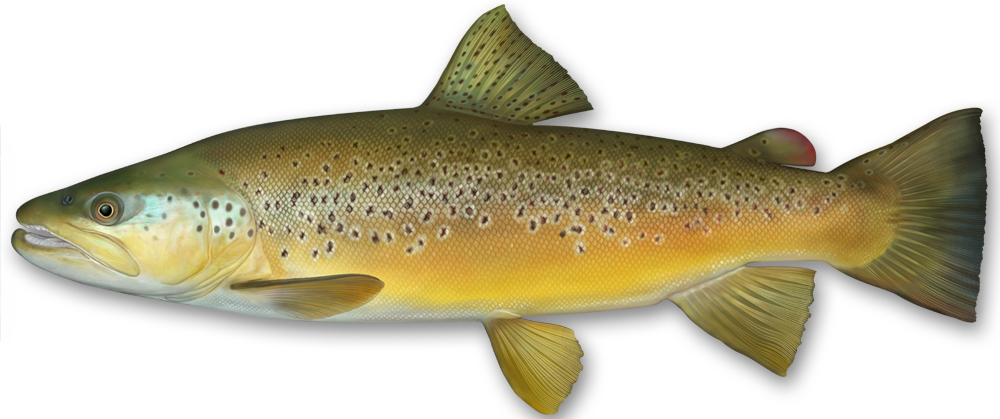Licence Required
The brown trout is an introduced northern hemisphere sports fish and can be found in most New Zealand waters excepting the very north of the North Island.
Brown trout live wherever cool water habitats exist. They vary considerably in body colouration and markings depending on their habitat.

Sea-run brown trout, which enter the river mouths in pursuit of whitebait and smelt, are silver with a few dark, often indistinct marks which appear as small spots or crosses. To the casual observer large “searuns”, because of their silver appearance, may be incorrectly identified as a searun salmon.
River resident brown trout are generally darker with brown or black spots, often surrounded by a pale halo.
Lake dwelling brown trout frequently appear more silver than river fish.
Brown trout are caught by a variety of methods which include: natural baits, spinners and wobblers, artificial flies which include nymph, wet fly, feathered lure and dry fly. They are considered to be more wary than the rainbow trout and, in a fly caster’s opinion, it is the most difficult of the species to deceive with artificial fly. Despite this observation, which may refer to large and more educated specimens, brown trout are the most common of our freshwater sportsfish and there are more brown trout caught by anglers than any other species.
Large brown trout may attain a weight of 10 kg or more, although a fish over 5 kg is considered a trophy.
Anglers today release unharmed many of the larger trout they catch. This makes good conservation sense, especially in high country rivers where large brown trout are highly valued.